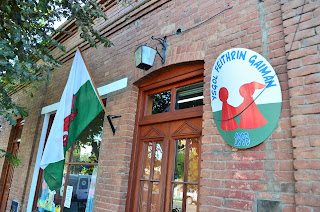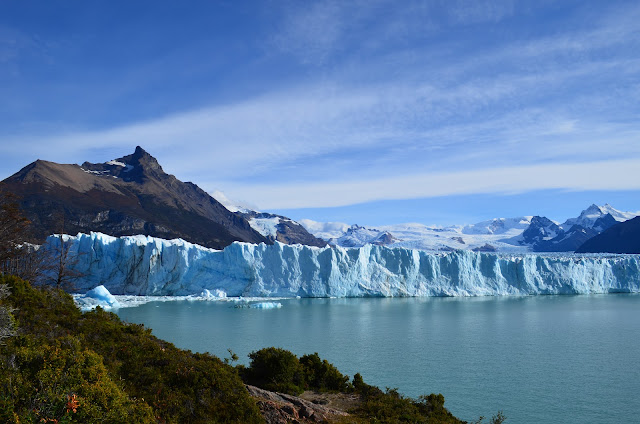 One of the last things you might expect to find amongst the seemingly endless prairie of Patagonia is a Welsh tea shop, but in Gaiman in Chubut (a province of Patagonia) you have a a number to choose from. In the mid 19th century a group of Welsh pioneers set off for the new world with an aim to found a colony that could keep the Welsh identity, which had been so quickly lost in colonies in North America.
One of the last things you might expect to find amongst the seemingly endless prairie of Patagonia is a Welsh tea shop, but in Gaiman in Chubut (a province of Patagonia) you have a a number to choose from. In the mid 19th century a group of Welsh pioneers set off for the new world with an aim to found a colony that could keep the Welsh identity, which had been so quickly lost in colonies in North America.
The colonists landed at Puerto Madryn, where we were based. Unfortunately there was no fresh water, and the whole venture almost ended in disaster. Lucky a local tribe took pity on the Welshmen and took them to the Chubut river, where the settlements of Trelew and Gaiman were set up. For over 50 years Welsh was the primary language of the region, however from the turn of the century onwards Spanish made in roads and soon very few people spoke Welsh. Luckily a small community of Welsh speakers persisted and in the 90s there was an upsurge in interest in the areas culture and identity.
Nowadays there are hints all over the region of Welsh heritage, non so more than in Gaiman. This little village is a little haven of Wales, complete with a bitter wind and sheep. The fusion of Welsh and Spanish culture can be seen everywhere down to the names on the post boxes such as Miguel Jones.

We visited Gaiman to see the village for ourselves, and to have some of its famous Welsh Tea. There were many options to choose from, but in the end we chose Ty Gwn. Set out like a turn of the century Welsh tea room and bedecked with Welsh trinkets such as a towel detailing the castles of North Wales.
The tea came with more cakes than I thought possible to eat, including bara brith, or "torta negra", which was most often translated as 'Welsh cake'. The tea itself was the best we've had since leaving Britain, and came in a massive tea pot with a brightly coloured cosy. When we finished one another was brought.
Despite my initial reaction, I did manage to finish all my cakes, only to be asked if I wanted any more. I politely declined as I felt as though I might burst at the seams!
Tom





















